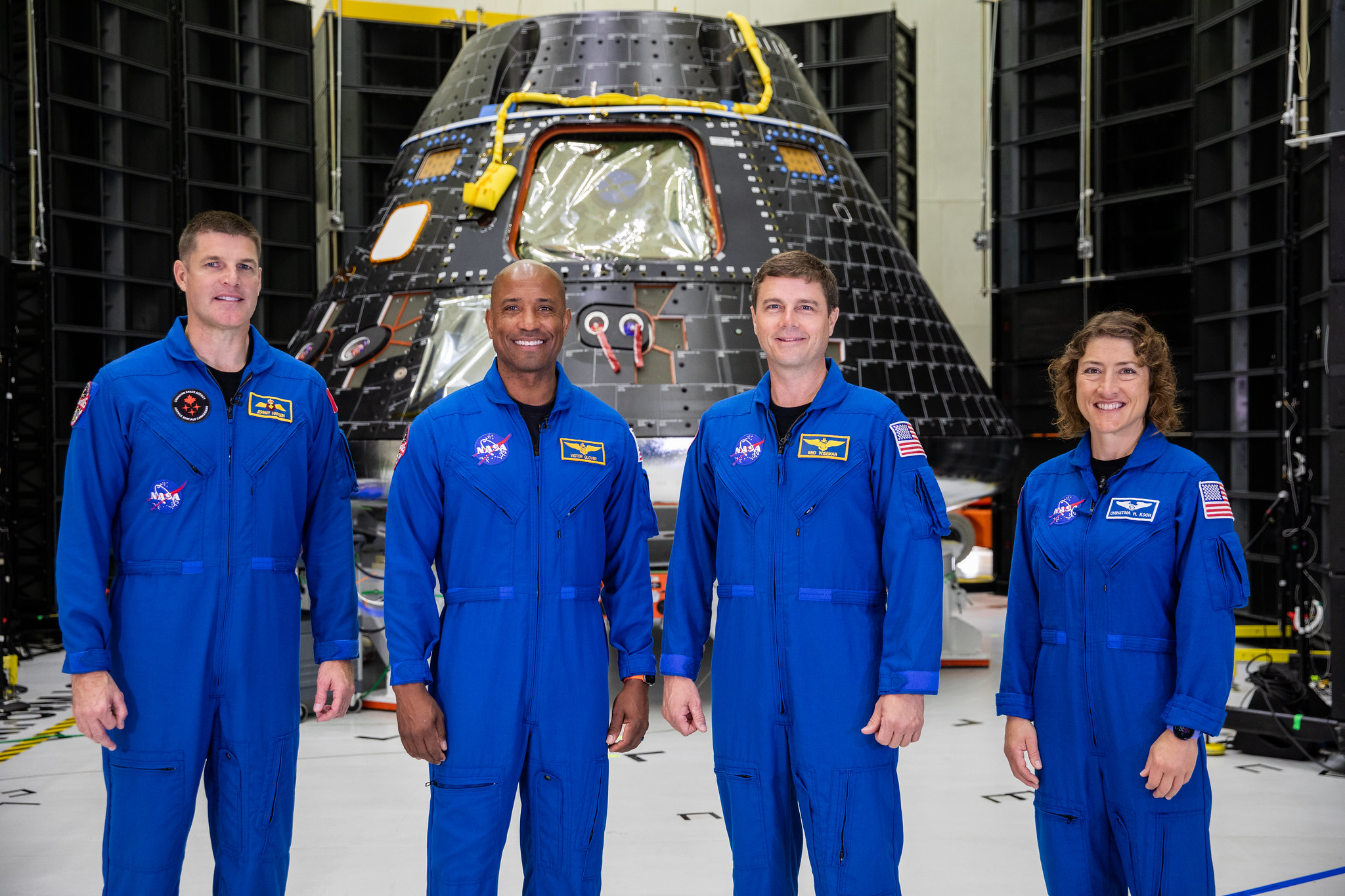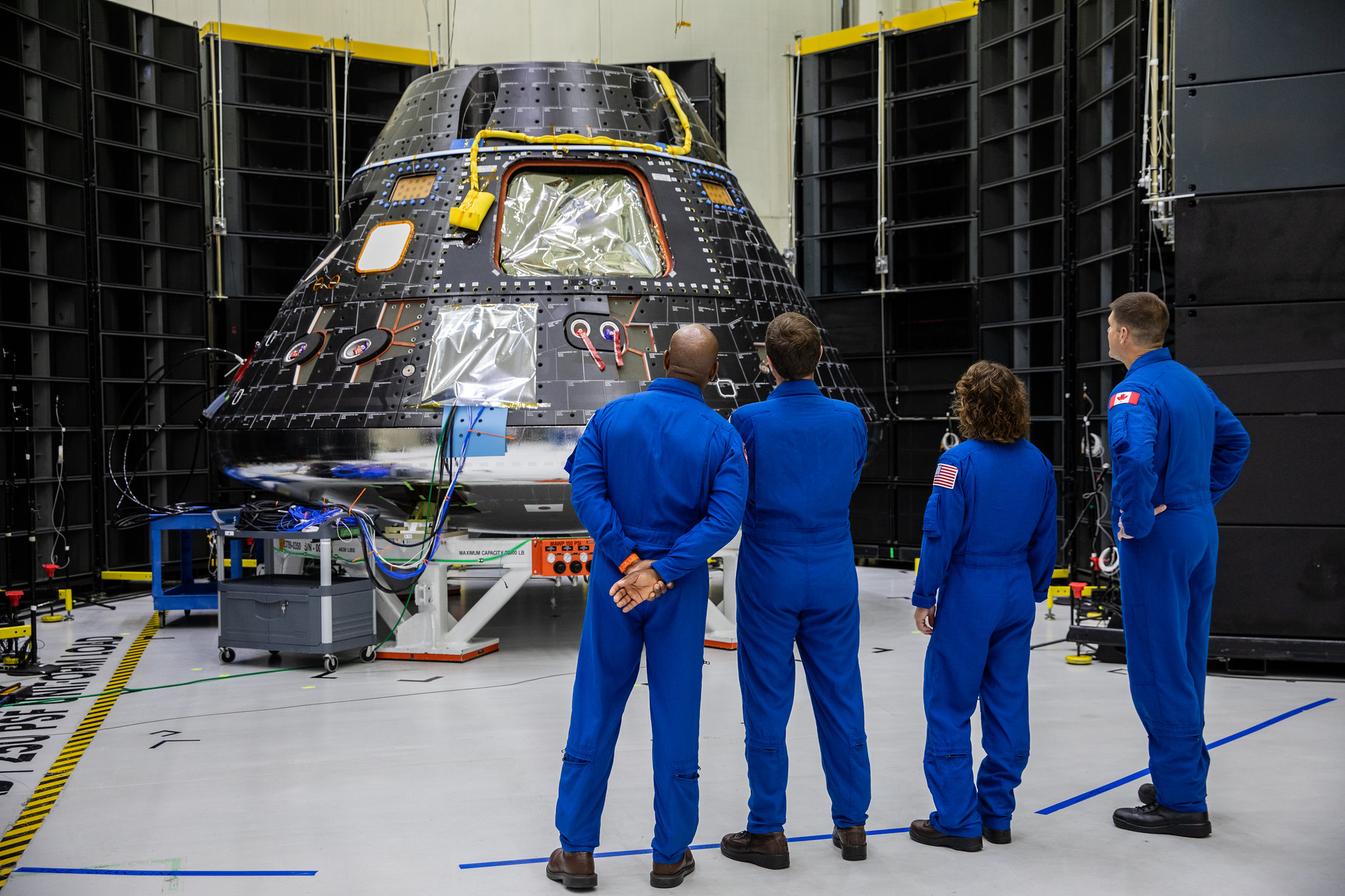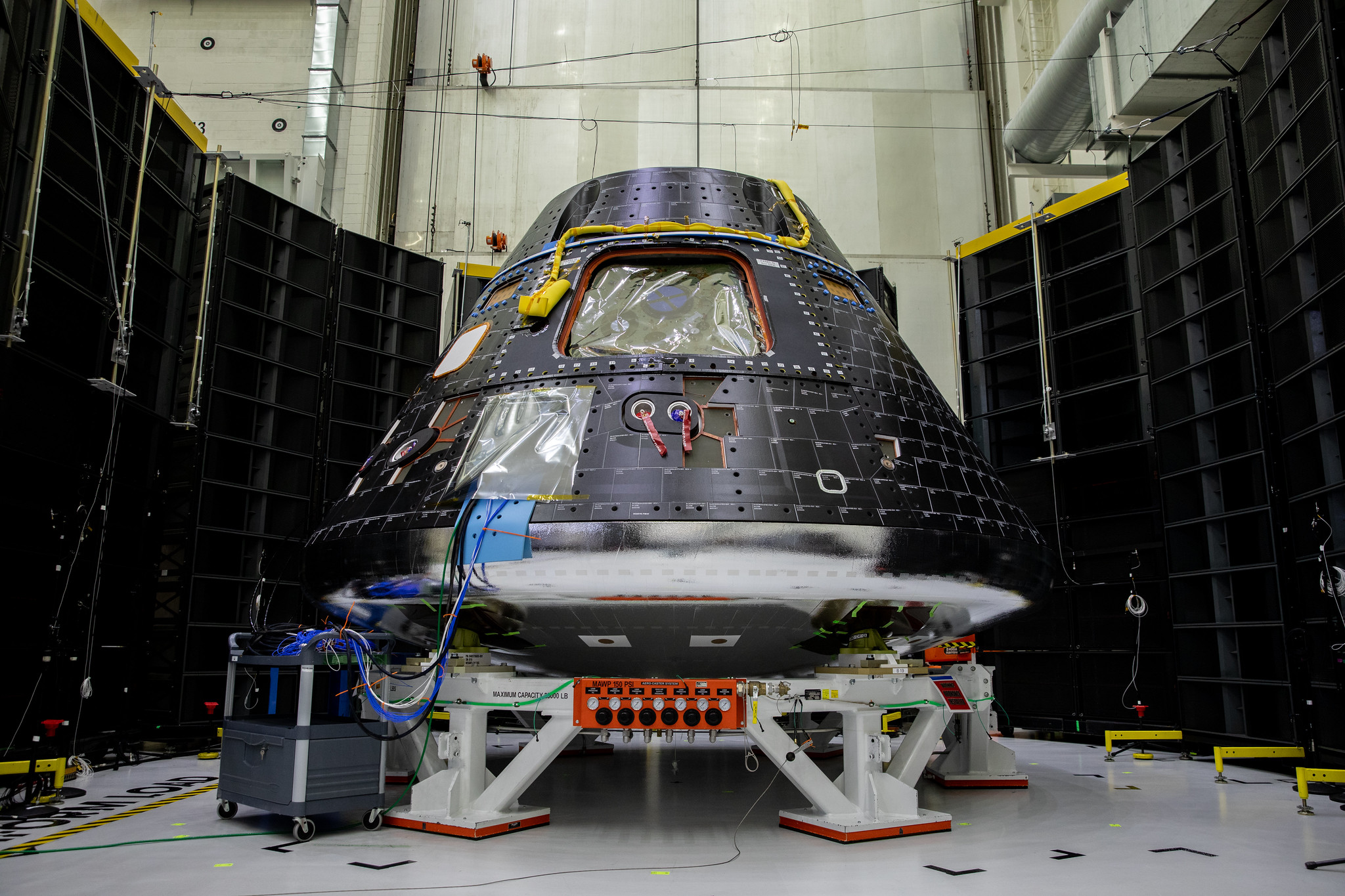The four astronauts embarking on a mission to the moon next year have had their first good look at the Orion capsule that will take them there.
NASA astronauts Christina Koch, Victor Glover, and Reid Wiseman, along with Canadian Space Agency astronaut Jeremy Hansen, got up close and personal with the Orion spacecraft during a visit to the Kennedy Space Center from where the moon-bound Artemis II mission is currently scheduled to launch in November 2024.
The Kennedy Space Center also shared a short video showing the astronauts’ reaction as they took their first in-person look at the spacecraft.
👀The #Artemis II crew got a first look at the @NASA_Orion spacecraft that is slated to fly them around the Moon in late 2024. pic.twitter.com/fOt4MQq79n
— NASA's Kennedy Space Center (@NASAKennedy) August 8, 2023
Artemis II will fly the same route as the uncrewed Artemis I mission, which successfully tested the flight system in a mission last year that also saw the first launch of NASA’s next-generation Space Launch System rocket.
The 10-day trip won’t land on the moon but instead perform a flyby, coming within around 80 miles of the lunar surface in a voyage designed to confirm Orion’s safety for carrying humans.
“This is a developmental mission,” Koch said at the Kennedy Space Center on Tuesday in comments reported by space.com. “We’re going to be training. We’re going to be figuring things out with the team as we go and really embrace the uncertainty.”
Wiseman added: “We’re helping influence the design of this to help our future astronauts that are going to have much bigger, much more complex missions.”
A successful Artemis II mission will pave the way for the highly anticipated Artemis III mission that will put the first woman and first person of color on the lunar surface in what will also be the first moon landing since 1972.
But the upcoming Artemis II flight will also record a bunch of firsts, with Koch becoming the first woman to go on a lunar flight, Glover the first Black man to do so, and Hansen the first non-American to go on such a mission.
NASA revealed the crew for the Artemis II mission at a big event in April, with the four astronauts beginning their training a short while later. While Koch, Glover, and Wiseman have all traveled to space before, this will be the first such mission for Hansen.
And now that they’ve seen the Orion capsule up close, the spacefarers must be feeling a little differently about the upcoming adventure, with the close encounter elevating the mission to a new level of reality.





